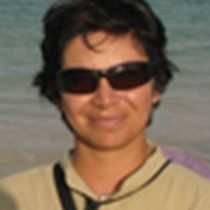Santa Cruz Island
Early this morning we entered in Academy Bay, named after the famous visit of the Academy of Sciences from California. This bay is surrounded by great impressive cliffs, and in the middle is found the largest town in the archipelago. This is not only the largest town but is also the home of the Charles Darwin Centre, where we learned so much about the restoration and conservation programs run by the Darwin Foundation and the Galápagos National Park. We found famous tortoises and their mates, for example the most successful male of the tortoises' breeding program, better known as Diego. He was sent back from the San Diego Zoo, and helps by increasing the population of the once almost extinct Hood tortoise. Most of the eggs the females lay come from his corral, so this population has a better chance to survive. Another famous tortoise is “Lonesome George” from Pinta Island, though this island is far north, recent studies suggest he is related to the tortoises from Hood, which is far south east. Despite his nickname, he is not that lonely; his time and space is shared with two females from Wolf volcano on Isabela Island. He is the last living tortoise from Pinta, and after a lot of effort no other tortoise has ever been found again there.
We left the Darwin Centre and explored Puerto Ayora and its colourful buildings and flowers. Along the way we had several opportunities to take great pictures, to support the local economy, or just to seat and enjoy observing the local activity around us. After exploring the town, we drove to the highlands to have lunch; there we had a lovely time looking for Galapagos giant tortoises in the wild, we found lots of them. We also kept our eyes open for Darwin finches, mockingbirds, doves, giant Scalesias and gorgeous landscapes. After such a great day we returned aboard the Islander, and started our navigation to Isabela and Fernandina Island.
Early this morning we entered in Academy Bay, named after the famous visit of the Academy of Sciences from California. This bay is surrounded by great impressive cliffs, and in the middle is found the largest town in the archipelago. This is not only the largest town but is also the home of the Charles Darwin Centre, where we learned so much about the restoration and conservation programs run by the Darwin Foundation and the Galápagos National Park. We found famous tortoises and their mates, for example the most successful male of the tortoises' breeding program, better known as Diego. He was sent back from the San Diego Zoo, and helps by increasing the population of the once almost extinct Hood tortoise. Most of the eggs the females lay come from his corral, so this population has a better chance to survive. Another famous tortoise is “Lonesome George” from Pinta Island, though this island is far north, recent studies suggest he is related to the tortoises from Hood, which is far south east. Despite his nickname, he is not that lonely; his time and space is shared with two females from Wolf volcano on Isabela Island. He is the last living tortoise from Pinta, and after a lot of effort no other tortoise has ever been found again there.
We left the Darwin Centre and explored Puerto Ayora and its colourful buildings and flowers. Along the way we had several opportunities to take great pictures, to support the local economy, or just to seat and enjoy observing the local activity around us. After exploring the town, we drove to the highlands to have lunch; there we had a lovely time looking for Galapagos giant tortoises in the wild, we found lots of them. We also kept our eyes open for Darwin finches, mockingbirds, doves, giant Scalesias and gorgeous landscapes. After such a great day we returned aboard the Islander, and started our navigation to Isabela and Fernandina Island.




